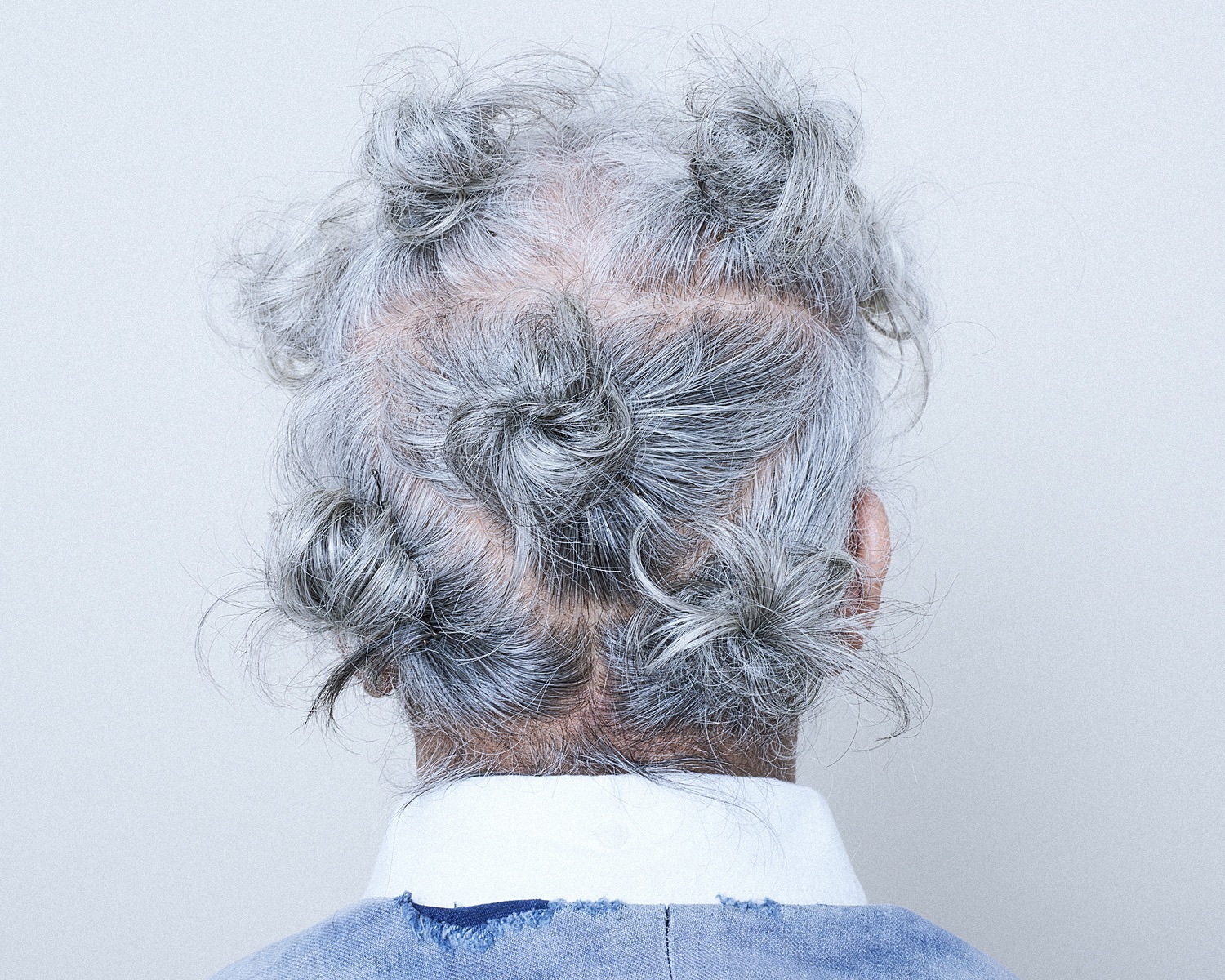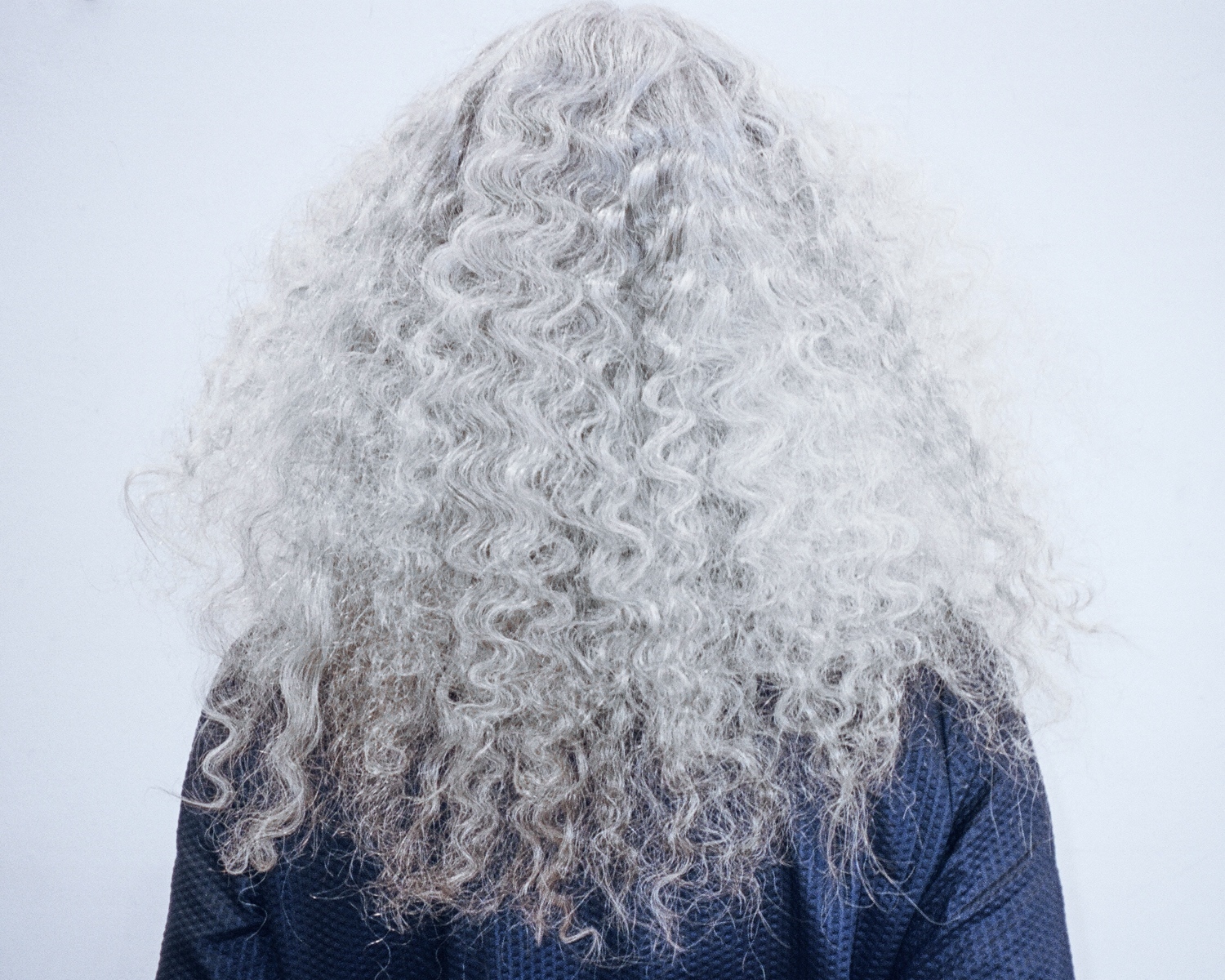i-D Hair Week is an exploration of how our hairstyles start conversations about identity, culture and the times we live in.
For spring/summer 2010, Karl Lagerfeld decided to change things up with his Chanel couture collection by trading the French fashion house’s gold embellishments for silver. Models were dressed in its signature two-piece suits in pale pinks and purples and accessorized with silver accents from their chrome-heeled booties to their hair, where their oversized heart-shaped bouffants were brushed with several thick icy streaks—as if they had gone prematurely grey.
But before ashen hair had made it to the Chanel runway, a growing number of young women were making a statement by deliberately going grey. As Hanna Hanra wrote for the Times London in 2009, “growing numbers of women are no longer eschewing the very thought of grey, but embracing a gunmetal mane with pride—and attitude.” Model Pixie Geldof was one of the first “it girls” to step out sporting silver tresses that year, but she was far from the first or the last to do it.
Women actually started rocking grey hair back in the 18th century. At the time white powdered wigs were a popular style for upper-class men, but most women would simply cover their natural locks and hairpieces with starch to give it a grey hue. The style didn’t last long and by the end of the century had mostly died out.
Commercial hair dye was first available in 1909, but at the time women coloring their hair was seen as socially unacceptable, so much so that salons had secret entrances and exits. The introduction of at-home dye in the 1950s finally allowed women to use dye without the stigma, but put more pressure on the need for them to hide their greys. “Losing friends because your hair is gray?” asked one Clairol ad from 1944, which went on to claim that sometimes “people think she [a grey-haired woman] looks too old to have fun.” Another ad from the hair care company dramatically declared grey hair to be a “heartless dictator.” The appearance of silver strands became associated with not only losing friends, but everything from careers to dates. Disguising greying hair quickly became a necessity for aging women feeling the pressure to maintain a youthful look.
The move to silver locks appears to be a natural evolution from the pastel hair trend. Much like in the 1970s when punks were experimenting with bold unnatural hair colors like bubblegum pink and fiery red, young people have been taking their hair color to extremes. But, with so many options to choose from, women rocking grey hair is an especially defiant act.
As former i-D fashion editor Caryn Franklin so eloquently explained to The Guardian, “We’ve been groomed—by the media, by advertisers, and now by ourselves—to understand that our gender has to try harder, to consume more, when it comes to our appearance. We’ve been taught to fear growing old.”
For those like Kate Moss and Tavi Gevinson, who debuted a silver-tinted bob at just 13 years old, the color was just the reminisce of a previous dye-job. But, for others like Cara Delevingne, Rihanna, and K-pop star CL, the choice to don silver tresses was intentional. In 2015, stylists across the country reported that the number of young women who have requested their hair to be dyed grey has skyrocketed, according to Slate.
“Up until this point most clients came in, and plenty still do, to cover their grey since they see it as a sign of aging, but around five years ago we saw people coming in and requesting grey,” said Sarah Fenoglio of Seagull Salon in New York City. “It is totally rebellious [to have grey hair] and I think more people are starting to embrace that rebellion. When I color somebody’s hair a beautiful grey color, it completely transforms them into this like sci-fi futuristic ethereal being.”
As Fengolio explained, when the recent grey hair movement started taking off, most hair color companies didn’t offer a natural-looking grey dye, since most women were trying to get rid of their silver strands, not showcase them. Now, there’s an array of options for creating and maintaining gunmetal locks. But, going grey can be an expensive and tedious process and there’s no cheap Kool-Aid alternative.
“I was inspired to go grey by Meryl Streep in The Devil Wears Prada,” Alexis Noll said. The 24-year-old is one of the nearly 300,000 women from around the world sporting silver locks under #grannyhair on Instagram. “I am often in awe of older women who have embraced their natural hair. I’d keep silver hair until I had it naturally if it was feasible cost-wise.”
In addition to those who are willingly going grey, the growing trend has helped women who are naturally sprouting silver hair to free themselves from the need to dye, which in a society that values women based on their youthfulness, can be a radical and empowering decision.
“I find that when women are ready to stop coloring their hair a brown or auburn and we color it grey for them so that they can grow it in, there is this ownership and excitement and a liberation that they feel—it is pretty exciting,” said Fengolio, who has noticed a definite increase in women wanting to reveal their greys.
In recent years, the fashion industry has even showcased the natural beauty of aging and those with unapologetically ashen hair. In 2014, Jean Paul Gaultier sent two silver-haired punks down his runway. One model sported a towering grey mohawk while the other wore a perfectly coiffed bouffant. In 2015, Céline unveiled its spring campaign fronted by an 80 year-old Joan Didion with her sleek grey bob, and shortly after Saint Laurent released an ad featuring 71 year-old Joni Mitchell with her long white locks, proving that grey hair doesn’t have to mean old — it can also mean edgy.
This exposure and celebration of grey-haired women of all ages will hopefully help eliminate the decades-long expectation that they need to maintain an ageless mane.
“Of course, if somebody feels better as a blonde or brunette, they have every right to have that color,” said Fengolio. “But, it is exciting to see people open their minds to colors beyond the traditional. The presence of grey and other untraditional hair colors in the hair color world opens up the possibility of self expression and self love.”

Credits
Text Erica Euse
Photography Daniel Cavanaugh
Hair Tiffany Fodor
Styling Christina Campagna
Make-up Michaela Bosch
Emmy wears Alpha 60.
Kamal wears Soulland.
